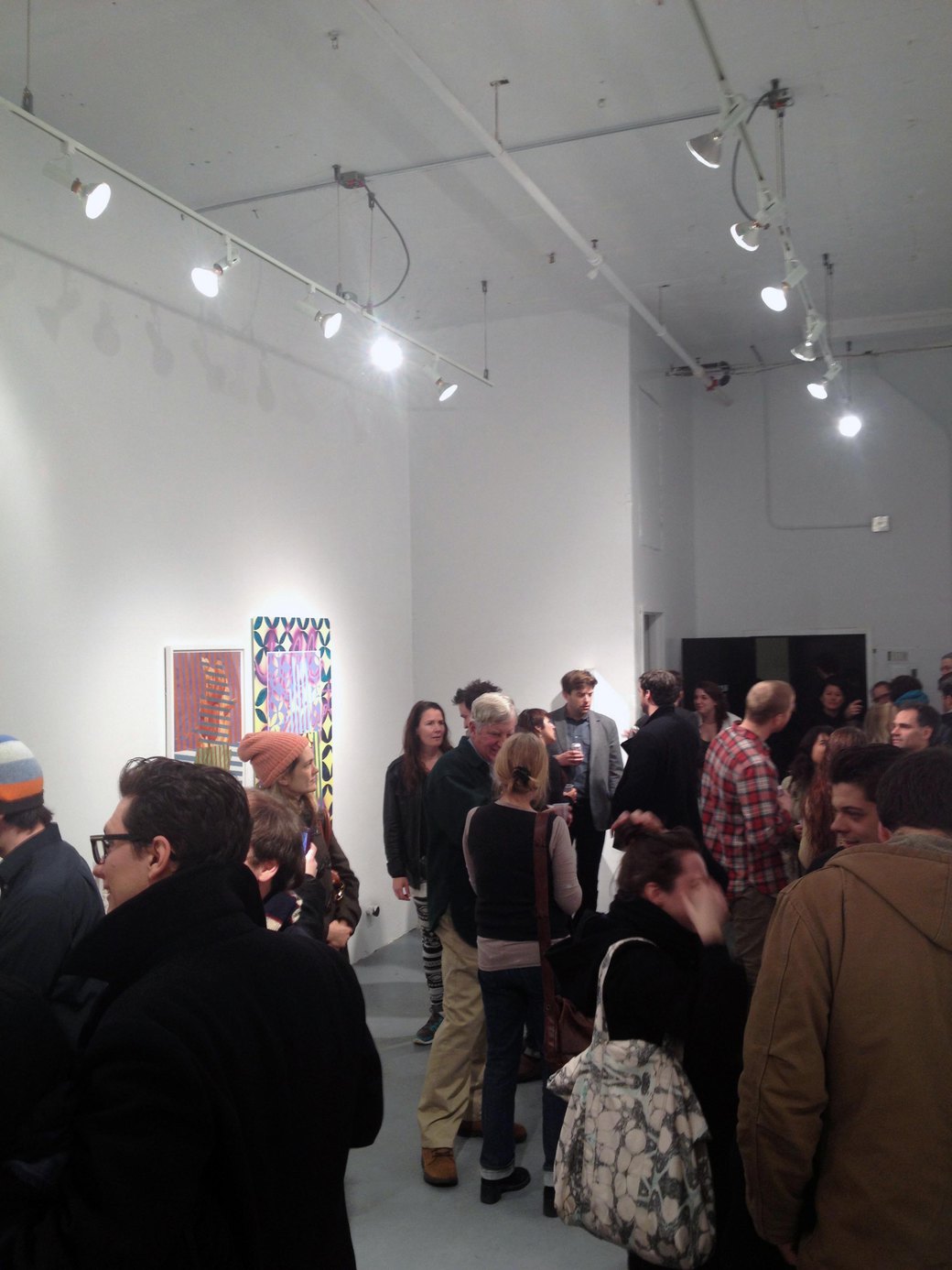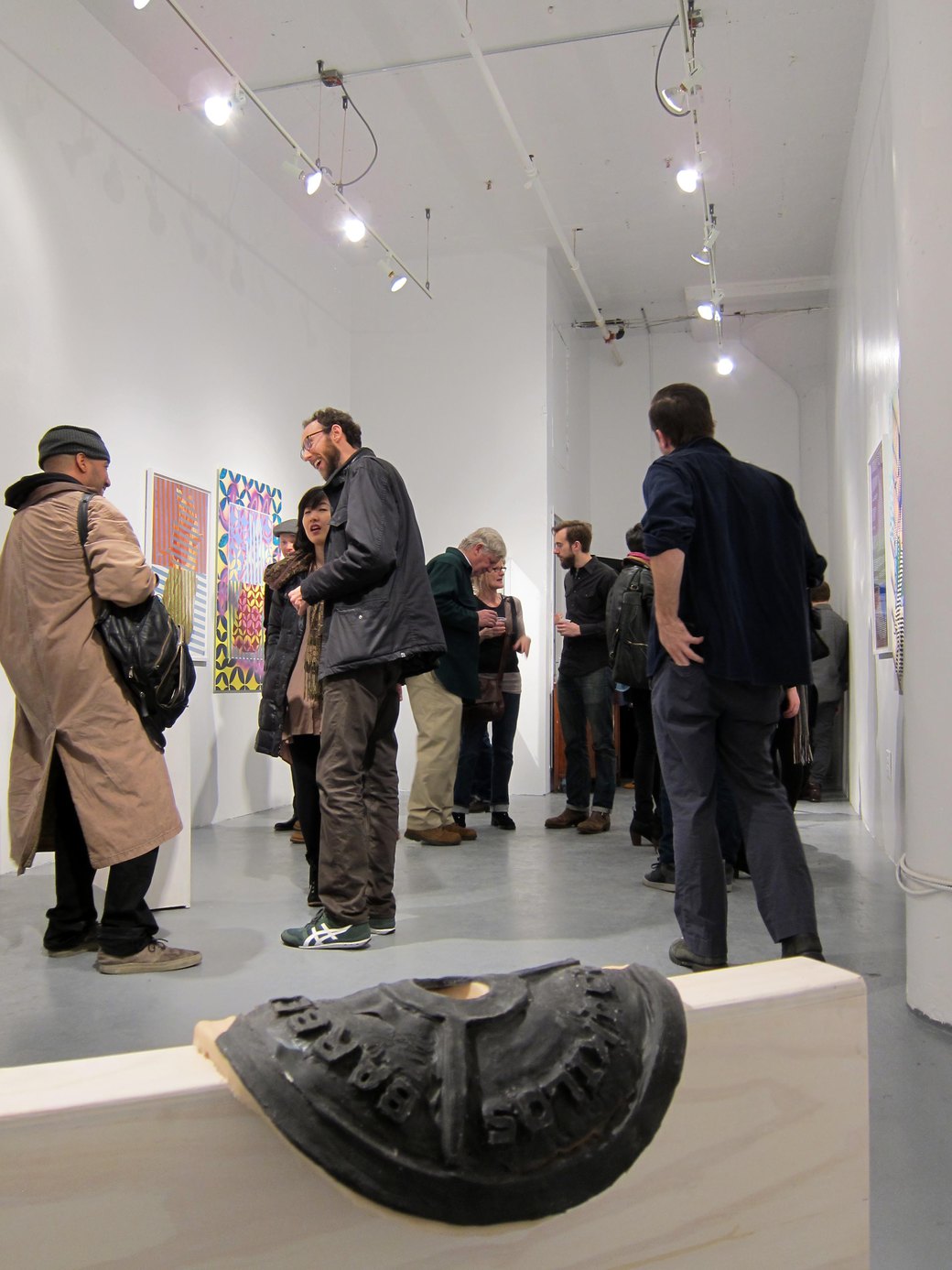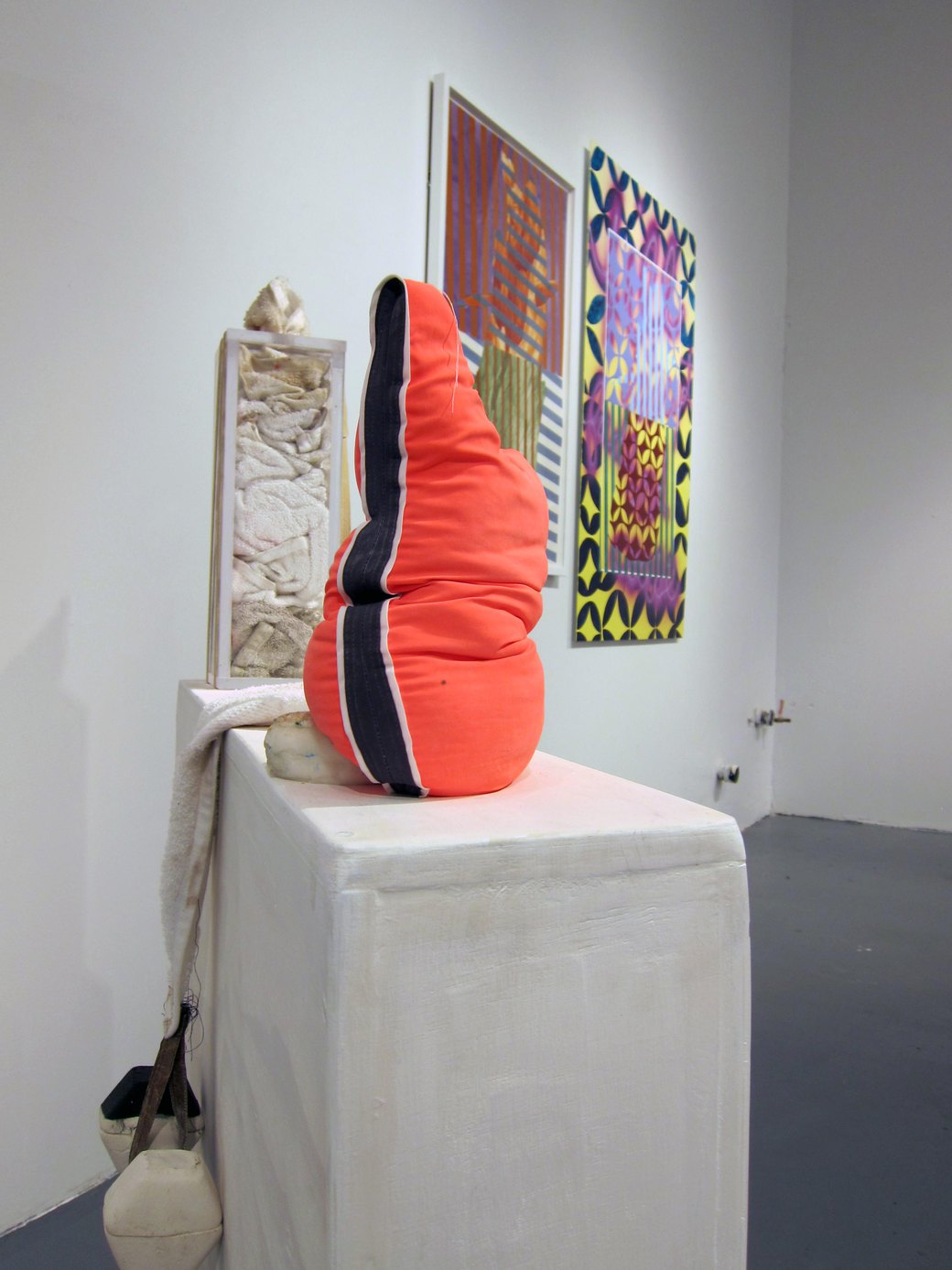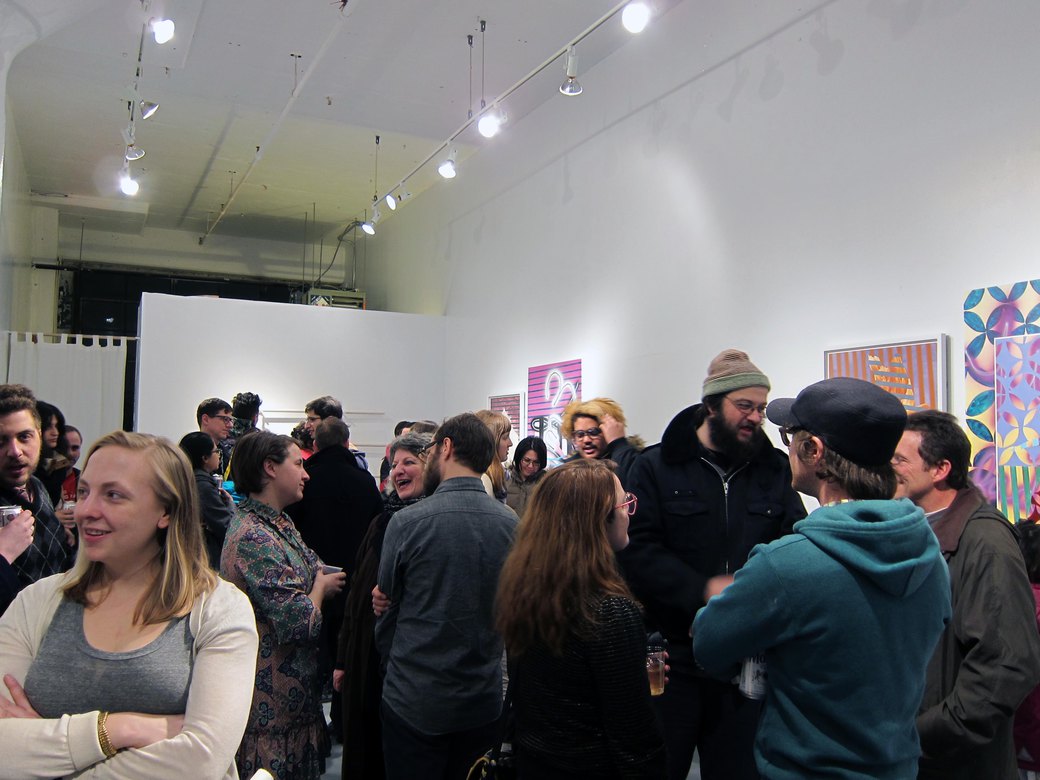
Last Saturday night, we visited a new gallery at 17-17 Troutman called Harbor Gallery. The exhibition, titled Residual Volume, showcased the work of JJ Miyaoka-Pakola and Cassie Raihl, both highlighting the similarities of the artists and juxtaposing them to create a visually compelling dialogue. These layered interactions colored the walls of the literal and figurative white space in Ridgewood, manifesting a well-received exhibition.
The two artists worked in a limbo between the actual and the desired space; between reality and memory, presence and absence. This in-between movement in the themes of both artists created a movement in the exhibition itself. Their work complemented and defined the distance between each other’s work.

Cassie Raihl’s work was composed of five sculptures. Her material-heavy abstraction, as she defined the exhibited works, was focused on physical labor and fetish. As she walked me through her works she pointed out the various materials used; from boxer shorts to cushions and T-shirts, these materials celebrate the absent body. Her white-centered work was mixed with colorful additions of commercial textures.

Whereas Cassie was using found objects, the commercial aspect was manifested through found colors from J. Crew catalogs arranged with colors found in 16th century Iranian documents in JJ’s paintings. Being a keen observer of his world, as he told us, he accesses his curiosity for color and there he finds inspiration. He also becomes an observer of his work during the process and builds on the idea that brought the painting into life. By becoming the viewer and the artist at the same time, parts of his work explain and give away parts of the process.

As we talked with Magali Duzant, whose work was shown before, she pointed out how the works of the two artists complimented each other spatially and visually, creating a natural fit based on the use of current subjects with commercial aesthetic. We also talked about the effect a gallery like Harbor has on the artistic community of Bushwick. According to Magali, the gallery is part of a larger equation that brings new artists together and, by opening their space for emerging artists to show their work, they become part of a broader network of people.

The 17-17 Troutman building, the home of several DIY galleries organized by artist collectives, was filled with people last Saturday. People moved around the galleries, viewed new works of art, supported the cultural production of an area and captured a moment in time of a neighborhood that finds inspiration in people coming together, exchanging ideas and, through their co-existence, creating something new.


